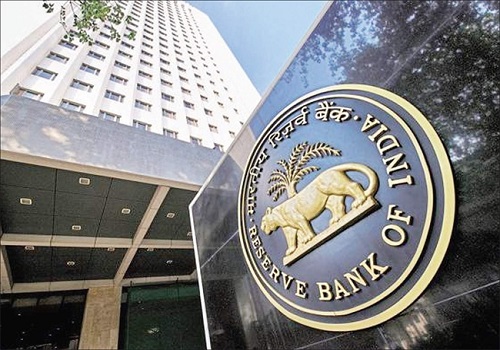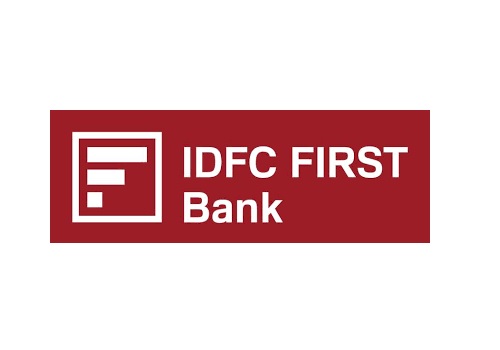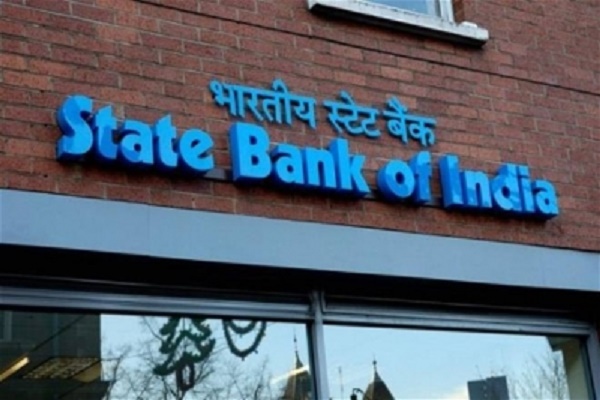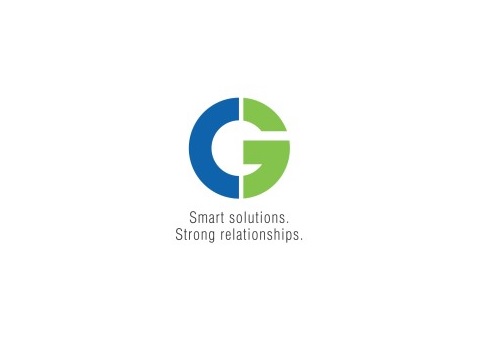Buy Ujjivan Small Finance Bank Ltd For Target Rs. 53 by Axis Securities Ltd
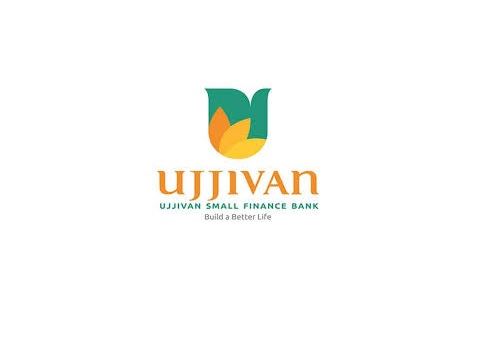
MFI Stress Peaks Out; Growth To Improve From H2 Onwards! Est. Vs. Actual for Q1FY26: NII – MISS; PPOP – INLINE; PAT – BEAT Changes in Estimates post Q1FY26 FY26E/27E (in %): NII: -5.6/-6.5; PPOP: -14.5/-11.2; PAT: -32.8/-15.1 Recommendation Rationale
PAR Accretion Tapering: The PAR accretion (in Group Loans) has been consistently moderating over the past 2 quarters. The PAR inch-up seen in Q1 can be attributed to the ARC sale done in Q4FY25, resulting in PAR looking optically meaningfully lower. However, adjusting for the ARC, the PAR has improved, supported by better X-bucket Collection trends, which have been consistently maintained at ~99.4% since May’25. The management expects Xbucket CE to normalise to ~99.5+% by Q3FY26. In the Individual Loan (IL) portfolio, PAR inchup can be attributed to the stress in KA, which the management expects to stabilise in the coming quarter. The bank has ramped up its collection team with a focus on early buckets to avoid forward flows. UJSFB has seen an improvement in CE in the SMA1 book from 36% to 47% and in the SMA2 book from 42% to 47%. The management is confident that slippages are peaking out in 9 out of 10 states in Q4FY25, while KA slippages have peaked out in Q1. Slippages are expected to trend downwards as the SMA pool continues to decline. This gives the management the confidence to maintain GNPA at <2.5% in FY26. Resultantly, credit costs in Q2 are expected to remain flattish QoQ and gradually decline over Q3 and Q4. The management expects H2 credit costs to be lower than H1. On a steady state basis, MFI credit costs are expected to settle at 2-2.25%, while secured portfolio credit costs are likely to be contained at 0.7-0.8, keeping overall credit cost for UJSFB at ~1.5-1.7%
GL Stress to Gradually Moderate, IL Portfolio Fares Better: UJSFB’s IL portfolio asset quality continues to fare better vs Group Loans (GL), ex-KA. However, in certain districts of KA, the IL portfolio has been facing headwinds owing to the impact of the ordinance. On the other hand, the IL portfolio in the key states such as TN and MH continues to hold up well. While in the GL portfolio, the southern states continue to exhibit stress, the Eastern and Western geographies continue to see stability, and the bank is comfortable in resuming growth in these geographies. The bank intends to keep the MFI portfolio diversified with no geography contributing to >15%.
Sector Outlook:
Positive Company Guidance: The bank has guided for growth momentum to improve over FY26, as it aims to clock an advances growth of 20%. Credit growth will be primarily led by secured assets, which are expected to grow at 35% in FY26. Deposits growth will mirror credit growth, with unabated focus on CASA Deposits. The bank intends to scale up the CASA Ratio to 27% vs ~24% in Q1. LDR is likely to be maintained at 88% during the year. With the bank in the investment phase, scale up of new products and continued investments towards tech, strengthening teams and the deposit franchise will keep Opex growth and consequently C-I Ratio elevated at 67% in FY26. While credit costs are expected to taper, the decline will be back-ended and thus, FY26 credit costs are expected to be at 2.3-2.4%. Current Valuation: 1.4x FY27E ABV; Earlier Valuation: 1.2x FY27E ABV Current TP: Rs 53/share. Earlier TP: Rs 49/share Recommendation: We maintain our BUY recommendation on the stock Alternative BUY Ideas from our Sector Coverage AU SFB (TP – Rs 900/share)
Financial Performance
? Operational Performance: UJSFB’s disbursements grew by 24% YoY/-12% QoQ, led by flat growth in MFI disbursements and a sharper de-growth in the secured segments' disbursements (+87% YoY, -25% QoQ). Advances grew by 11/4% YoY/QoQ, with growth led by secured businesses (+58/8% YoY/QoQ). MFI portfolio was flat QoQ and de-grew by 12% YoY. The share of secured book improved to ~46% vs 43.5% QoQ. Deposits grew by 19/3% YoY/QoQ, driven by TDs (+21/4% YoY/QoQ). CASA deposits grew by 13% YoY/-2% QoQ. Resultantly, the CASA Ratio declined to 24.3% vs 25.5% QoQ. C-D Ratio stood at 86.2% vs 92.5/85.4% YoY/QoQ.
? Financial Performance: NII growth was weak and de-grew by 9/1 YoY/QoQ, owing to weak MFI growth, excess liquidity and shift in portfolio mix. Margins contracted by ~60bps QoQ and stood at 7.7% vs 8.3% in Q4FY25. Non-interest income grew by 26/-8% YoY/QoQ. Opex growth was controlled at 18/-4% YoY/QoQ. C-I Ratio decreased and stood at 67.4% vs 68.3% QoQ. PPOP de-grew by 29% YoY and was flat QoQ. Credit costs were tapered QoQ to stand at 2.75% vs 3.41% in Q4FY25. PAT de-grew by 66% YoY and grew by 24% QoQ.
? Asset Quality: UJSFB’s asset quality is better than the industry. The X-bucket collections in both the group and individual loans stood at 99.3% in Jun’25 vs 99.5% in Mar’25. The bank has seen X-bucket CE improve from 99.1% in Apr’25, which was impacted by the implementation of MFIN guardrails 2.0 and seasonality. GNPA/NNPA stood at 2.52/0.7% vs 2.18/0.49% QoQ. PCR stood at 73% vs 78% QoQ. Write-off during the quarter stood at Rs 159 Cr.
Key Takeaways
NIM compression imminent: As the portfolio continues to skew towards lower-yielding segments, pressure on yields is imminent. In Q1FY26, the sharp NIM compression of 60bps QoQ was on account of portfolio mix shift towards secured products (25bps), excess liquidity of Rs 1,100 Cr (17bps), and interest reversal on advance payment (14bps). The management expects the excess liquidity to ease for the next couple of quarters, thereby supporting NIMs. Thus, in Q2, margins are expected to improve to 7.9% and to be maintained at that level in Q3. NIMs should also find support from the resumption of growth in the better-yielding MFI book. The bank is also focusing on ramping up growth in the better-yielding Micro Mortgage, Vehicle and Gold loans to support margins. With the commencement of the rate cut cycle, UJSFB has also taken an SA and TD rate cut and expects the CoF to taper in H2FY26. The bank has slashed its TD rates by 65bps and also recalibrated SA rates in certain buckets by up to 100bps. The bulk deposit rates have also declined. Thus, the management expects CoF to decline by 20bps each quarter over FY26. Collectively, (i) Growth in better yielding secured segments, (ii) Faster growth in IL vs GL, wherein yield differential is ~100bps, (iii) Gradual downward repricing of deposits driving down CoF should enable UJSFB to maintain margins at 7.8-7.9% over FY26-28E.
Medium-to-Long-Term Guidance: The bank will continue to invest in the deposits franchise as it aspires to ramp up its CASA Ratio to ~35% over the next 3-5 years. Advances growth is expected to be maintained at 20-25% CAGR, enabling UJSFB to clock a loan book of Rs 1 Lc Crover the next 3-5 years, with the share of secured products improving from 46% currently to 60-65%. Continued investments towards the deposit franchise, tech and new product ramp-up will continue to keep near-term Opex ratios elevated. Over the medium term, as operating leverage kicks in with scale, the bank expects the C-I Ratio to improve significantly to 55% over the next 3-5 years. The bank will continue to strengthen its branch network as it plans to add 25 branches in FY26 and 400 branches over the medium term. As the share of the secured businesses in the portfolio mix improves, credit costs are expected to taper meaningfully to settle at 100- 150bps of average. Gross advances.
Outlook The asset quality challenges in the MFI segment have peaked out and are expected to improve hereon. Credit costs are likely to remain elevated for another quarter before tapering over H2. While growth in the secured businesses will continue to remain healthy, we expect a pick-up in MFI growth in H2FY26 as challenges wane and demand improves. The improving growth in the MFI segment (particularly IL), along with a downward repricing of deposits aiding CoF, should partially offset the impact of the portfolio mix shift on NIMs. Opex ratios will continue to remain elevated to reflect the investments towards the franchise, tech platform and strengthening the deposit franchise. Thus, we expect UJSFB to deliver RoA/RoE of 1.7-2%/15-18% over FY27-28E, primarily driven by a sizable reduction in credit costs. We expect UJSFB to deliver a healthy Advances/Deposits/NII/Earnings growth of 21/21/16/30% CAGR over FY25-28E. However, factoring in near-term challenges on growth and shift towards lower-yielding secured products, we trim our pNII estimates by 5-6% over FY26-27E. Moreover, led by continued investments weighing on Opex ratios and a slight delay in credit cost normalisation, we have hacked our FY26/27E earnings estimates by 33/15%.
Key Risks to Our Estimates and TP
• The key risk to our estimates remains a slowdown in overall credit growth, which could potentially derail our earnings estimates.
• The scalability of new products and secured book remains a key monitorable.
• Asset quality concerns persisting for long could keep credit costs elevated, hurting our earnings estimates
For More Axis Securities Disclaimer https://simplehai.axisdirect.in/disclaimer-home SEBI Registration number is INZ000161633














